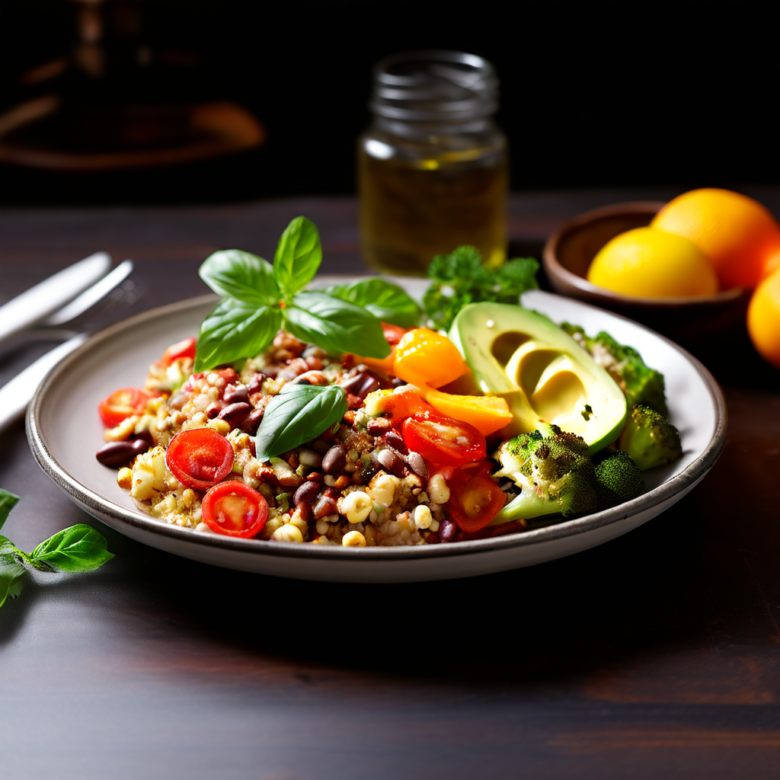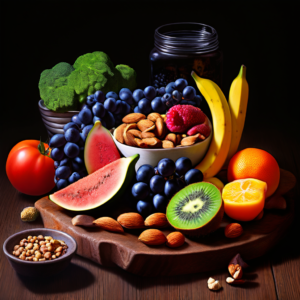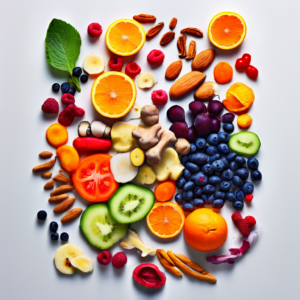Alright, listen up, pal.
We’re talking meal plans for losing some weight, not rocket science, but close.
It’s about this thing called energy balance, eating the good stuff, and not setting yourself up to fail. Forget those silly diets.
The body, it’s like a car, right? Needs the right fuel to run.
You gotta burn more than you put in, a calorie deficit, they call it.
You cut back maybe 500 to 750 a day, you might lose a pound or two a week. Not about starving, about being smart.
Now, the big three: protein, fats, carbs. They all got jobs. Protein, that’s for muscles, keeps you full. Chicken, fish, beans, the usual suspects.
You want around 0.8-1 gram for every kilo of your body, they say.
Fats, for the hormones, you know? Avocado, nuts, olive oil are your friends.
Carbs, they give you the gas, but be picky, go for the whole grains, fruits, veggies, not the sugary crap.
45-65% of your calories should be from carbs, they reckon.
Don’t forget fiber and water, the forgotten heroes.
Fiber keeps the pipes clean, 25-30 grams a day will do. Water, it’s life, drink eight glasses at least. Can even trick the tummy into thinking you’re full. Some fancy studies say it helps, so go for it.
Now, set your sights, aim for a pound or two a week. That’s how you keep going.
Figure out your body’s needs first, the BMR, what you burn doing nothing, then add in your activities, that’s your TDEE. Use those numbers to build a deficit.
A woman, 35, average height and weight? About 2335 calories burned, so she would eat around 1600-1800 calories to lose weight. Easy, right?
Get the right fuel, lean proteins, that’s your chicken, fish, and beans, muscle builders, good stuff. Then there are fats, your avocado, nuts, the works.
Complex carbs for the long haul, think whole grains and veggies.
Chicken with quinoa and broccoli? That’s a good start.
Don’t forget that fiber, oats, lentils, fruits, keeps you feeling like you’ve actually eaten something.
Don’t just throw food on the plate, measure it out, use your hands, protein a palm, carbs a cupped hand, fat a thumb. It’s not that hard, really.
Eat three squares or a bunch of small ones? Whatever works, just be consistent, and eat balanced.
Breakfast is key, start with proteins, fats, and complex carbs.
Look, this isn’t a race.
It’s about keeping at it, you’re not perfect, I’m not perfect, nobody is.
This ain’t some diet, this is about fueling up the right way, getting you where you want to be. It’s that simple.
So, go on, give it a shot, what have you got to lose? Besides some weight, of course.
Understanding Weight Loss Basics
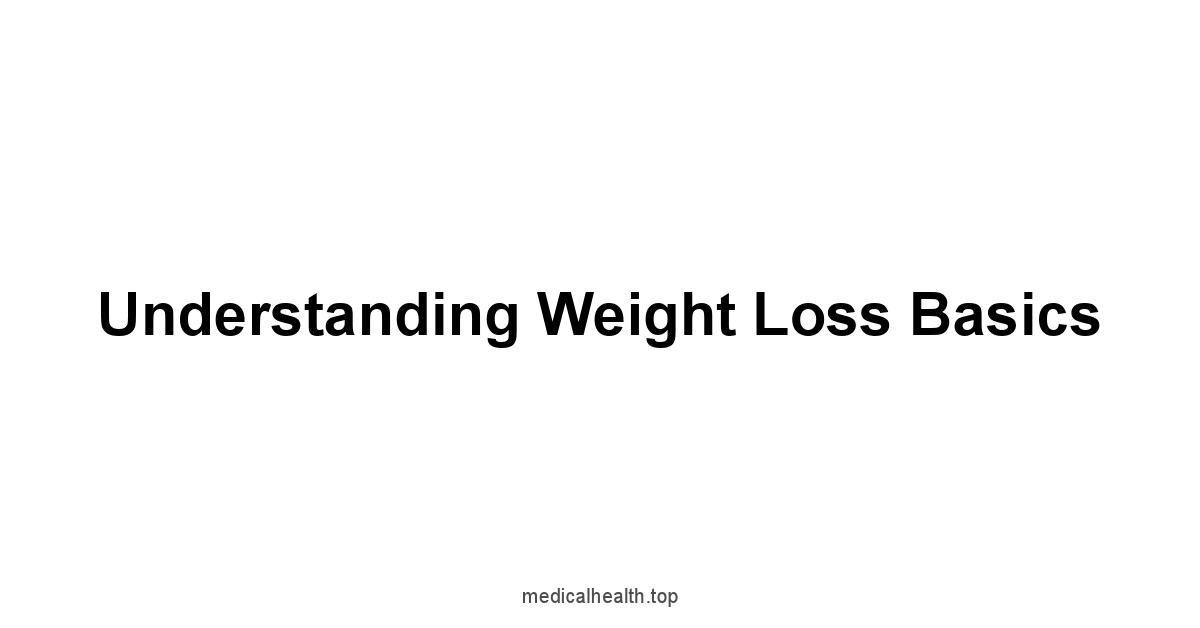
Weight loss. It’s simple, but not easy.
It comes down to energy balance, what you put in versus what you burn. Too much in, not enough out and you gain. Not enough in, more out, you lose. This is the crux of it, the basic science.
You need to understand the fundamentals to make it work.
It’s not magic, but a consistent process, the body is a machine, respect that. It reacts to inputs, to what you feed it.
Understanding what makes up the food is crucial, it’s not just about numbers, but about nutrients.
Knowing the difference between good fats and bad fats, and the role of protein, carbs and fiber is not just important, it’s the key to success. Forget the fad diets. The real work comes from a balanced approach.
It’s a combination of diet and activity, one feeds the other. You need both to keep the weight off.
The Calorie Deficit: Your Foundation
A calorie deficit is the cornerstone of weight loss. Think of it as the fundamental rule.
You consume fewer calories than your body uses, the body then dips into stored energy, which is fat, to make up the difference. It’s that simple. It isn’t about starvation, it’s about control. It’s not a sprint, it’s a marathon. You can’t cut too much too soon, be moderate. You need to stay sustainable.
To achieve this deficit, you have two options. First, you eat less.
Second, you increase your physical activity to burn more calories. Or ideally, both.
It’s like balancing the scales, adjusting the weights.
You have to monitor how much energy you get from your food, and what amount of energy you are using through your day to create that gap.
- Understanding Your Needs: Start with your basal metabolic rate BMR, the amount of calories your body burns at rest. Then, factor in your daily activity levels.
- Creating the Deficit: Aim for a daily deficit of 500 to 750 calories for a steady weight loss of 1-2 pounds per week.
- The Math:
- 1 pound of fat equals roughly 3,500 calories.
- A 500 calorie daily deficit leads to a loss of 1 pound per week 500 calories x 7 days = 3,500 calories
- Example: If your body burns 2,500 calories daily and your goal is to lose 1 pound a week, aim to consume 2,000 calories per day.
- Key takeaway: It’s not about drastically reducing your intake, but about making strategic changes.
Macronutrients: Protein, Fat, and Carbs
Macronutrients are the building blocks of your diet.
Protein, fat, and carbohydrates, each with different roles.
It’s like a house, each part has a specific purpose, and they work together.
You need to know what they do to make good choices for your weight loss.
It’s not only about calories but also what those calories are made of.
Protein is key for building and repairing tissues, keeping you full.
Fat, another necessity, for hormone production and overall health, but choose the right kinds.
Carbs are the body’s main energy source, but some are better than others. It’s a balancing act.
Think of it like a symphony, everything needs to be in harmony.
- Protein:
- Function: Builds muscle, repairs tissues, keeps you full.
- Sources: Chicken, fish, beans, lentils, eggs, tofu, Greek yogurt.
- Recommendation: Aim for 0.8-1 gram of protein per kilogram of body weight daily, it may need to be increased based on activity levels.
- Fats:
- Function: Hormone production, nutrient absorption, cell health.
- Sources: Avocado, nuts, seeds, olive oil, fatty fish.
- Recommendation: Focus on unsaturated fats, avoid trans fats. Aim for 20-35% of your total calories from fat.
- Carbohydrates:
- Function: Main source of energy.
- Sources: Fruits, vegetables, whole grains, legumes.
- Recommendation: Choose complex carbs over simple carbs. Aim for 45-65% of your total calories from carbs.
- Balancing Act: It’s not about eliminating any macronutrient, it’s about balance and making sure you’re eating the right types and ratios based on your goals.
- Example of Balanced Macros For a 2000 calorie diet:
- Protein: 25% 500 calories or 125 grams
- Fat: 30% 600 calories or 67 grams
- Carbohydrates: 45% 900 calories or 225 grams
The Role of Fiber and Hydration
Fiber and hydration, they are the often overlooked components of weight loss. They are not glamourous, but they are crucial. Fiber helps with digestion and keeps you full.
Water helps with everything in your body, from energy to digestion and weight loss.
They are the unsung heroes of a good weight-loss journey.
They are the support system for the other macronutrients.
Fiber is not digested by your body, it adds bulk to your diet, making you feel satisfied.
It keeps things moving in your digestive system and helps regulate blood sugar.
Hydration is vital, it assists in metabolic processes and keeps you healthy overall, a dehydrated body does not function at its best.
Think of fiber as the cleaner and water as the oil for the machine.
- Fiber Benefits:
- Digestion: Promotes regular bowel movements and prevents constipation.
- Satiety: Keeps you feeling full, reducing overeating.
- Blood Sugar: Helps regulate blood sugar levels, which is important to avoid cravings.
- Sources: Fruits, vegetables, whole grains, legumes, oats.
- Recommendation: Aim for at least 25-30 grams of fiber per day.
- Hydration Benefits:
- Metabolism: Water is crucial for many metabolic processes.
- Satiety: Drinking water before meals can help reduce appetite.
- Energy: Proper hydration combats fatigue.
- Recommendation: Drink at least 8 glasses of water per day, or even more if you are active. Listen to your body.
- Practical Tips:
- Start your day with a glass of water.
- Include a variety of fiber-rich foods in every meal.
- Carry a water bottle to help you stay hydrated throughout the day.
- Be mindful of how hunger can be mistaken for thirst.
- Statistics:
- A study published in the “Journal of Nutrition” found that increased fiber intake was associated with greater weight loss and improved blood sugar control.
- Research in the “American Journal of Clinical Nutrition” indicated that drinking water before meals can lead to a reduction in calorie consumption.
- Key takeaway: Fiber and water are key components for a healthy weight loss plan. They support your efforts in ways you might not expect.
Setting Your Weight Loss Goals
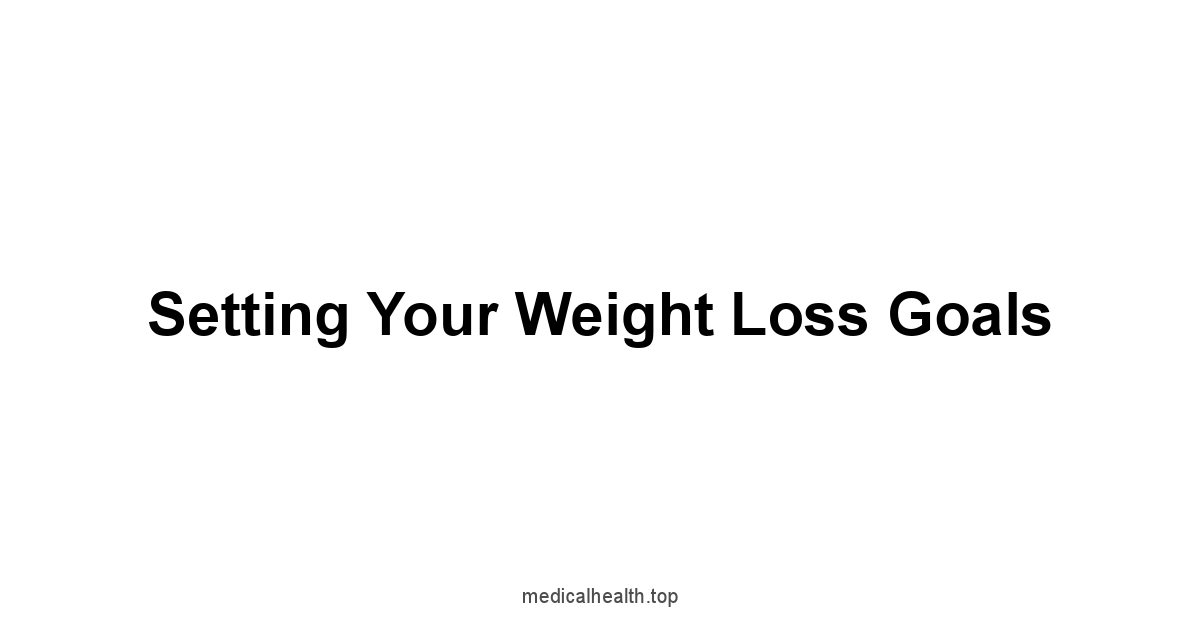
Setting goals is the starting line. You need to know where you’re going to get there.
Not just any goal, but goals that are realistic, achievable.
It’s not just about a number on the scale, but about your health and how you feel. It’s about setting a path.
You need to know where you are now and where you want to go to make the right moves.
Realistic targets keep you motivated.
It is not about instant results, but steady, lasting change.
When you set impossible goals you set yourself up for failure, and failure will make you quit.
Understanding your calorie needs makes your plan specific.
You are creating an effective plan that is yours, and that is the only thing that will work for you.
You need a direction, a destination, and a timeline to get there.
Realistic Targets: How Much and How Fast
Realistic targets, they keep you in the game.
Losing weight too quickly isn’t healthy and often leads to regaining it all back. You don’t want to fall back to the begining. Slow and steady wins the race, always.
It’s about sustainable progress, not about some unrealistic expectations.
You need to set targets you can hit, and those hits will keep you moving forward.
The recommendation is to aim for 1-2 pounds of weight loss per week.
This rate is not too harsh, and it’s sustainable for most people.
It allows your body to adapt without feeling deprived. It’s about consistency over time.
- Why 1-2 Pounds Per Week?
- Sustainable: It’s a rate that most people can stick to long-term.
- Healthy: Avoids drastic drops that can cause muscle loss and health problems.
- Prevent Rebound: Decreases the likelihood of regaining the weight back.
- Factors to Consider:
- Current Weight: Those with more weight to lose may initially see faster results.
- Individual Differences: Metabolism varies person to person, which will affect how quickly you lose weight.
- Lifestyle: Activity level, stress, and sleep can all affect weight loss.
- Setting Realistic Targets:
- Start Small: Don’t aim to lose everything in a month. Set smaller goals.
- Use Percentages: Set goals in percentage. For example 5%-10% of your current body weight.
- Track Progress: Use a scale, measurements, and photos to monitor your results.
- Example Targets:
- If your weight is 200 pounds, a realistic initial goal is 10 pounds in 6-10 weeks.
- If your weight is 150 pounds, aim for 7-8 pounds in the same time frame.
- Listen to Your Body: If you are not losing weight, adjust your calorie intake or physical activity.
- Important: Be patient, focus on progress, not perfection. Weight loss is not a linear process. There will be ups and downs.
Calculating Your Daily Calorie Needs
Calculating your calorie needs is like understanding your engine’s fuel requirements. It’s not guesswork, it’s science.
You need to know how much energy your body requires to function and then adjust based on your goals. It’s the base of your weight loss journey.
You need to measure the needs of the body to make the proper adjustments.
Your basal metabolic rate BMR is the starting point, how many calories you burn at rest.
Then, you need to factor in your daily activity levels.
This helps you find your total daily energy expenditure TDEE. It’s a personal calculation.
You are not a machine, and the needs of your machine are very specific to you.
- Basal Metabolic Rate BMR:
- Definition: The number of calories your body burns at rest to maintain basic functions.
- Calculation: The Mifflin-St Jeor equation is commonly used:
- Men: BMR = 10 x weight in kg + 6.25 x height in cm – 5 x age in years + 5
- Women: BMR = 10 x weight in kg + 6.25 x height in cm – 5 x age in years – 161
- Total Daily Energy Expenditure TDEE:
- Definition: The total calories your body burns in a day, including activity.
- Calculation: Multiply your BMR by an activity factor:
- Sedentary: BMR x 1.2 little to no exercise
- Lightly Active: BMR x 1.375 light exercise 1-3 days/week
- Moderately Active: BMR x 1.55 moderate exercise 3-5 days/week
- Very Active: BMR x 1.725 hard exercise 6-7 days/week
- Extra Active: BMR x 1.9 very hard exercise/physical job
- Example:
- A woman, 35 years old, 170 cm tall, 75 kg, moderately active:
- BMR = 10 x 75 + 6.25 x 170 – 5 x 35 – 161 = 1506.5
- TDEE = 1506.5 x 1.55 = 2335 calories per day
- A woman, 35 years old, 170 cm tall, 75 kg, moderately active:
- Adjusting for Weight Loss:
- Calorie Deficit: To lose weight, you need to consume fewer calories than your TDEE.
- Target: Subtract 500-750 calories from your TDEE for 1-2 pounds of weight loss per week.
- In the example: the above woman should eat between 1600-1800 calories per day to lose around 1-2 pounds per week.
- Important Considerations:
- Age, Sex, and Height: These factors play a role in calorie needs, and should be calculated accordingly.
- Muscle Mass: Muscle burns more calories than fat, so those with more muscle mass will have higher calorie needs.
- Changes: As you lose weight, your TDEE will change. Reassess your calorie needs every so often.
- Use Online Calculators: Several online BMR and TDEE calculators can help you with these calculations.
- Seek professional help If you are not sure how to proceed, consult with a professional for more accurate calculation and advice.
Defining Your Timeline
Defining your timeline is like planning a trip.
It’s not just about the destination, but the route you’ll take.
It helps to make the weight loss process seem more manageable and less daunting. You need to have clear milestones and deadlines. A timeline keeps you accountable.
Without a timeline, it will be difficult to track your progress.
A realistic timeline also prevents you from falling into the trap of unrealistic expectations.
It helps you to stay motivated and prevent you from feeling overwhelmed.
It gives you an idea of how long it might take you to reach your final goal.
- Breaking Down Your Goals:
- Short-Term Goals: Think of these as weekly or monthly targets. They’re smaller and easier to achieve.
- Long-Term Goals: Your final weight loss target is your long-term goal. It may take a few months or even a year.
- Setting a Timeline:
- Calculate the total weight loss: Determine the total amount of weight you would like to lose to get to your desired weight.
- Establish a weekly goal: Plan on losing 1-2 pounds per week.
- Estimate the months: Divide total weight by the weekly target to get a timeframe in weeks, then divide by 4 for the estimated amount of months.
- Examples:
- Goal: To lose 30 pounds.
- Timeline: 1-2 pounds per week means it will take between 15 to 30 weeks around 3-7 months
- Goal: To lose 10 pounds.
- Timeline: 1-2 pounds per week, means it will take between 5 to 10 weeks around 1 to 2 months
- Using Milestones:
- Track progress: Use smaller milestones along the way.
- Reward Yourself: Celebrate hitting your milestones to stay motivated. Don’t celebrate with food.
- Example Timeline:
- Month 1: Lose 4-8 pounds. Adjust meal plan and exercise if needed.
- Month 2: Lose another 4-8 pounds. Measure progress with before/after photos.
- Month 3: If you need to, lose another 4-8 pounds. Review overall progress and create a maintenance plan.
- Month 4+: Continue with maintenance plan or work towards your next goal.
- Flexibility Is Important:
- Adaptation: Be ready to adjust your timeline if needed.
- Plateaus: Be ready for plateaus and adjustments.
- Key takeaway: A timeline helps you stay focused and motivated on your weight loss journey. It’s not about speed, it’s about consistency and progress.
Choosing the Right Foods
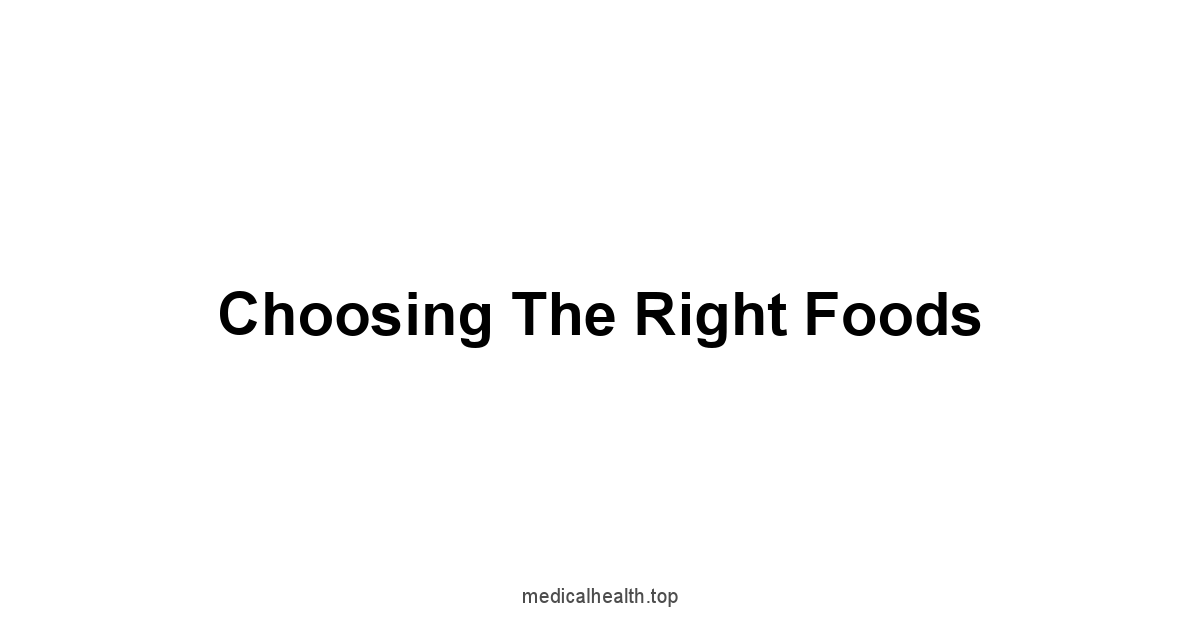
Choosing the right foods, that is where the real change happens.
It’s about filling your plate with the things that fuel your body. Not all food is created equal.
You need to understand the power of lean proteins, healthy fats and complex carbs.
Eating for weight loss isn’t about deprivation, it’s about making better choices, and having a balanced meal.
It’s not about what you can’t have, but about what you can have.
It’s about the quality of your food, not just the amount. It’s about making food your ally in the process. Good choices make the journey easier. It is a key part of your overall plan.
Lean Protein Sources: Chicken, Fish, and Beans
Lean protein, it’s the backbone of your weight loss plan.
It keeps you full, builds and repairs muscles, and it’s not just about quantity but also quality.
You need to choose your protein sources carefully, they need to work for you, not against you.
Lean protein sources are your friends on this journey.
Chicken, fish, and beans are great choices.
They provide the essential amino acids your body needs without the excess fat and calories. It’s about making choices that support your goals.
You have plenty of options, that are healthy and easy to find.
- Chicken:
- Description: Versatile, affordable, and widely available.
- Benefits: Low in fat, high in protein, essential nutrients like niacin and selenium.
- Best Options: Chicken breast, grilled or baked.
- Tips: Remove the skin to reduce fat content.
- Fish:
- Description: Great source of omega-3 fatty acids.
- Benefits: Supports heart health, reduces inflammation.
- Best Options: Salmon, tuna, cod, mackerel, and sardines.
- Tips: Choose baked, grilled, or steamed options over fried.
- Beans:
- Description: A great plant based source of protein and fiber.
- Benefits: Keeps you feeling full for longer, helps regulate blood sugar.
- Best Options: Black beans, kidney beans, chickpeas, lentils.
- Tips: Use in salads, soups, or as a side dish.
- Other Lean Protein Options:
- Eggs: Versatile, nutrient-rich, and affordable.
- Tofu: Soy-based protein source, great for vegetarians and vegans.
- Greek Yogurt: High in protein, great for breakfast or snacks.
- Turkey: Similar to chicken, low in fat and high in protein.
- Statistics:
- A study in the “American Journal of Clinical Nutrition” found that high protein intake leads to increased feelings of fullness and greater weight loss.
- A research showed that people who eat lean proteins were more likely to maintain weight loss over time.
- How to Incorporate:
- Meal Prep: Grill chicken breasts or bake fish for easy meals during the week.
- Variety: Rotate your protein sources for variety and balanced nutrition.
- Portion Control: Use measuring tools to control portions.
- Key takeaway: Choose lean proteins for effective weight loss, they are key in reaching your goals, make them your allies.
Healthy Fats: Avocado, Nuts, and Olive Oil
Healthy fats, they are essential for your health and well being.
It’s not about avoiding fats all together, but about choosing the right kinds.
Your body needs fats for hormone production, nutrient absorption, and overall cell function.
So choose your fats wisely, it is about supporting your weight loss journey not working against it.
Avocado, nuts, and olive oil, they are your allies.
They provide your body with necessary nutrients and are packed with flavor.
It’s not about just calories, but also the quality and value of those calories. Good fats make you feel good.
- Avocado:
- Description: Creamy and versatile.
- Benefits: Rich in monounsaturated fats, fiber, vitamins, and minerals.
- Uses: Add to salads, sandwiches, or make guacamole.
- Tips: Eat in moderation due to calorie density.
- Nuts:
- Description: Convenient and nutritious.
- Benefits: Source of healthy fats, protein, and fiber.
- Best Options: Almonds, walnuts, cashews, peanuts.
- Tips: Eat in small portions as a snack or salad topping.
- Olive Oil:
- Description: Primary source of fat in the Mediterranean diet.
- Benefits: Rich in monounsaturated fats and antioxidants.
- Uses: Use in cooking, salad dressings, or drizzled over vegetables.
- Tips: Choose extra virgin olive oil for the best quality.
- Other Healthy Fat Sources:
- Seeds: Chia, flax, and hemp seeds are full of Omega-3 fatty acids.
- Fatty Fish: Salmon, mackerel, and tuna.
- Natural Nut Butters: Peanut, almond, or cashew butter without added sugars.
- Cooking: Use olive oil for sautéing or roasting vegetables.
- Snacks: Eat a small handful of nuts or avocado slices as snacks.
- Dressings: Make your own salad dressing with olive oil and lemon juice.
- A study in the “New England Journal of Medicine” found that a diet rich in healthy fats led to better heart health and weight management.
- Research shows that nuts and avocados can help lower cholesterol levels and improve satiety.
- Important Notes:
- Portion Control: Healthy fats are calorie-dense, so consume them in moderation.
- Balance: Combine healthy fats with other nutrients for optimal results.
- Read Labels: Avoid trans fats, often found in processed foods.
- Key takeaway: Healthy fats are a crucial part of your diet. Make good choices. They are your partners on this journey.
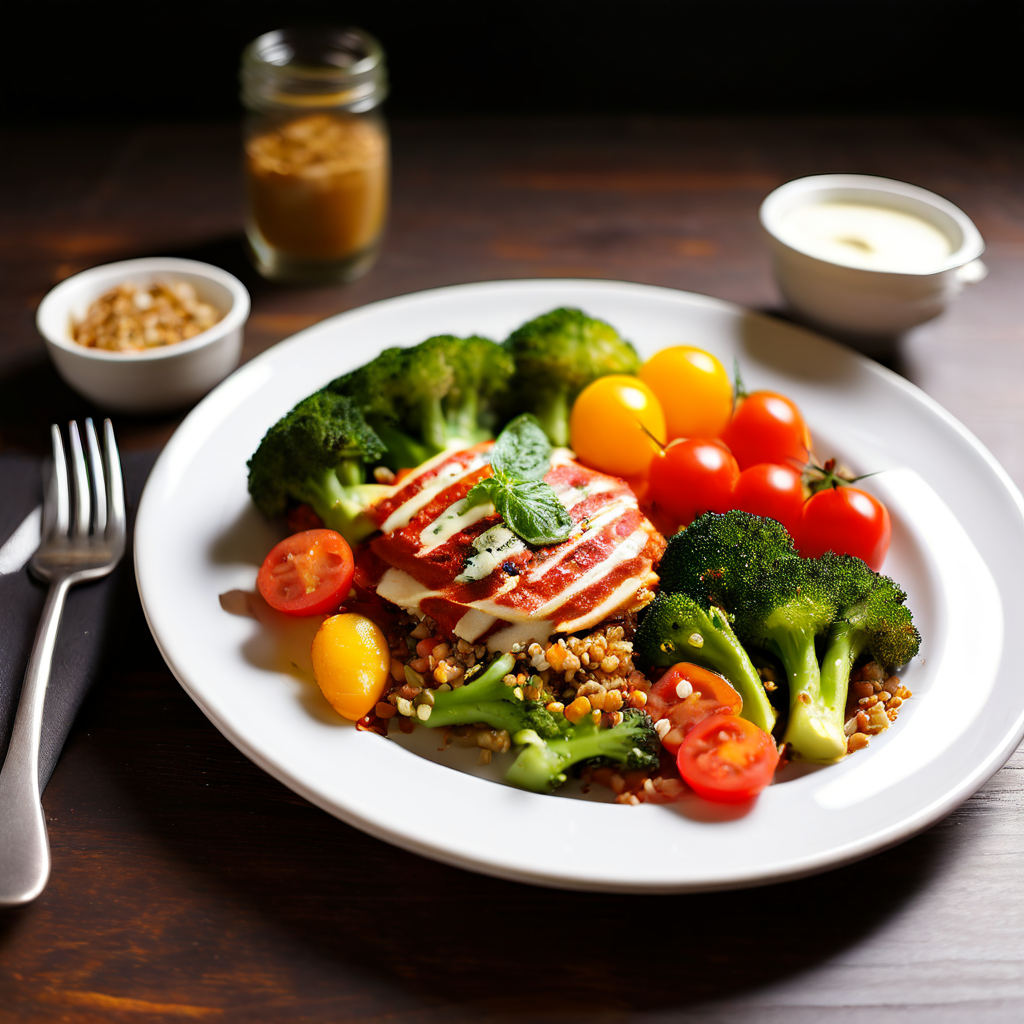
Complex Carbohydrates: Whole Grains and Vegetables
Complex carbohydrates, they provide sustained energy and are a key to effective weight loss.
It’s not about avoiding carbs entirely, but about choosing the right types. Whole grains and vegetables are your allies.
They provide fiber, vitamins, and minerals that are essential to your health.
They keep you going for longer, and that’s key for a weight loss journey.
Simple carbs offer a quick energy boost that fades quickly and will often make you crave more.
Complex carbs, on the other hand, release energy slowly, keeping you feeling full and satisfied.
It’s about fuel that works for you and not against you.
It is about making the right decision for long term results.
- Whole Grains:
- Description: Contain the entire grain kernel, including the bran, germ, and endosperm.
- Benefits: High in fiber, which aids digestion and keeps you full.
- Best Options: Brown rice, quinoa, whole wheat bread, oats, barley.
- How to Use: Replace refined grains with whole grain options.
- Vegetables:
- Description: Low in calories, rich in nutrients and fiber.
- Benefits: Offer a wide array of vitamins, minerals, and antioxidants.
- Best Options: Leafy greens, broccoli, carrots, peppers, tomatoes, sweet potatoes, and all other kinds of colors.
- How to Use: Fill half your plate with vegetables during meals.
- Other Complex Carb Sources:
- Legumes: Beans, lentils, peas, high in protein and fiber.
- Fruits: Moderate portion sizes, good source of fiber and vitamins.
- Breakfast: Opt for oatmeal, whole wheat toast.
- Lunch and Dinner: Add vegetables to all your meals. Choose brown rice or quinoa instead of white rice.
- Snacks: Have fruit or vegetable sticks when you feel hunger in between meals.
- A study published in the “American Journal of Clinical Nutrition” indicated that people who eat more whole grains tend to have healthier weights and lower disease risk.
- A research showed that higher vegetable consumption is associated with a lower risk of chronic diseases and obesity.
- Important Tips:
- Portion Control: Even healthy carbs should be consumed in moderation.
- Variety: Choose a variety of colorful vegetables for different nutrients.
- Read Labels: Look for 100% whole grains, and try to avoid products with added sugars or refined flours.
- Balance: Pair complex carbs with protein and healthy fats for balanced meals.
- Key takeaway: Complex carbohydrates are a key part of your weight loss plan. Make good choices and you will find it’s a lot easier than expected.
High Fiber Options: Oats, Lentils and Fruits
High fiber options, they keep you full and satisfied.
It’s not just about eating less, but about eating the right things that keep you feeling good.
Fiber slows down digestion, which keeps you full, and also helps regulate blood sugar levels.
Oats, lentils, and fruits, they are the ones you want on your plate.
They help you make the most of your weight loss efforts.
Fiber is the key to keeping your digestive system healthy.
It helps prevent constipation and improves your overall digestive health.
These foods are packed with nutrients, they are a key part of a healthy diet.
These options are versatile and easy to incorporate in your daily meal plan.
- Oats:
- Description: A whole grain known for its high fiber content.
- Benefits: Keeps you full, regulates blood sugar, and lowers cholesterol.
- How to Use: Enjoy as oatmeal for breakfast, use in smoothies, or bake goods.
- Tips: Choose steel-cut or rolled oats over instant versions, that have added sugars.
- Lentils:
- Description: A type of legume rich in fiber and protein.
- Benefits: Supports digestive health, and aids in weight loss.
- How to Use: Add to soups, stews, salads, or make lentil patties.
- Tips: Lentils are easy to prepare and are very versatile.
- Fruits:
- Description: Natural source of fiber, vitamins, and antioxidants.
- Benefits: Supports satiety, provides essential nutrients, and adds natural sweetness.
- Best Options: Berries, apples, pears, oranges, bananas.
- Tips: Eat whole fruits instead of juices to get the fiber.
- Other High Fiber Options:
- Vegetables: Broccoli, Brussels sprouts, carrots, and leafy greens.
- Seeds: Chia seeds, flax seeds, and psyllium husk.
- Legumes: Chickpeas, black beans, and kidney beans.
- Breakfast: Add oats to your morning meal, or eat some fruits.
- Lunch and Dinner: Include lentils in your meals, add a side of fruits and vegetables to every lunch and dinner.
- Snacks: Have a piece of fruit or a handful of nuts between meals.
- Research shows that increased fiber intake is associated with greater weight loss and better blood sugar control.
- Studies suggest that diets rich in fiber lead to lower risk of cardiovascular disease and type 2 diabetes.
- Increase Gradually: Add fiber to your diet slowly to avoid digestive discomfort.
- Drink Water: Make sure to drink plenty of water to help the fiber move through your system.
- Variety: Choose different fiber sources for a balanced diet.
- Key takeaway: High fiber options are a key part of your weight loss plan. They are important to support your diet and achieve the results you seek.
Portion Sizes: How Much to Eat
Portion sizes, it is about quantity as much as quality.
You can eat the healthiest foods, but if you eat too much of them, it will affect your weight loss efforts.
Understanding portion sizes is a skill that needs to be developed.
It is about eating enough to feel good, and not too much that it leads to extra weight.
It’s not just about what you eat but how much.
Overeating, even healthy foods, will hinder your weight loss goals.
Use your tools to measure your food, or simply use your hands as a rough estimate.
It’s about being mindful of how much food you put on your plate.
- Understanding Portion Control:
- Definition: Managing how much food you eat at each meal.
- Why It’s Important: Prevents overeating and ensures you are consuming the right amount of calories.
- Tools for Measuring:
- Measuring Cups and Spoons: Use these for precise measurements, specially for liquids, grains, and nuts.
- Food Scale: Weigh your food to control portions, particularly meats, and cheeses.
- Hand Measurement: Use your hands as a guide:
- Protein: A palm-sized portion of protein about 3-4 ounces
- Carbs: A cupped hand of carbs about ½ cup
- Fats: A thumb-sized portion of fat about 1 tablespoon
- Tips for Portion Control:
- Use Smaller Plates: Smaller plates can make your meal look larger.
- Don’t Eat Directly From the Container: Measure out the portion you’ll eat instead.
- Serve Yourself: Control the portion sizes you put on your plate.
- Be Mindful: Eat slowly and pay attention to your hunger and fullness cues.
- Pre-Portion Snacks: Divide snacks into small bags or containers before eating.
- Example Portion Sizes:
- Protein: 3-4 ounces of chicken, fish, or lean meat.
- Grains: ½ cup of cooked rice, pasta, or quinoa.
- Vegetables: 1-2 cups of raw or cooked vegetables.
- Fruits: 1 medium piece of fruit or ½ cup of berries.
- Nuts: 1/4 cup of nuts.
- Fats: 1 tablespoon of olive oil or nut butter.
- Studies show that people who practice portion control tend to have more success with weight loss and maintenance.
- A research published in the “Journal of the American Dietetic Association” found that the use of smaller plates leads to a reduction in calorie intake.
- Consistency: Be consistent with portion sizes to make it a habit.
- Practice: It might take some time to get used to these practices.
- Adjustments: Be prepared to adjust your portion sizes based on your needs and activity levels.
- Key takeaway: Portion control is key to your weight loss goals, develop it as a habit, and you’ll have the key to success.
Structuring Your Meal Plan
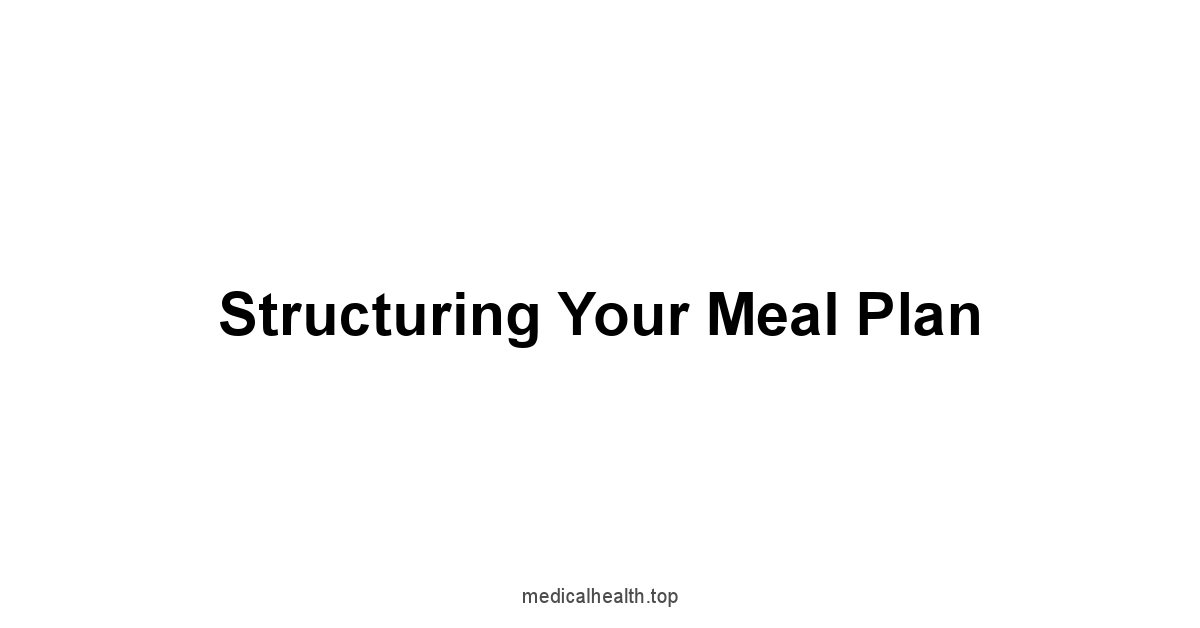
Structuring your meal plan, it’s the framework for your success. It’s about planning when and what you eat. You need a schedule that fits into your day.
It will make it easier to keep track of everything, and make the whole process simpler.
It’s about creating meals that nourish your body and keep you full, so you do not reach for unhealthy options.
It’s not just about choosing the right foods, but also about meal frequency and the proper timing.
A good plan will make it easier to keep track of your calories and macros, which will help you to stay on the right path.
It’s about creating habits that support your weight loss goals.
Meal Frequency: Three Meals or More?
Meal frequency, it’s a personal choice.
There is not a single method that works for everyone.
It’s not necessarily about eating more meals, but about finding a pattern that fits into your lifestyle.
Whether it’s three meals or more, it should make you feel full and energized throughout the day.
Some prefer three bigger meals, others like smaller more frequent ones.
Both can work for weight loss, the key is to listen to your body and find what makes you comfortable and satiated.
A good plan helps you maintain a balanced intake, and keep cravings at bay. It is about keeping your energy levels steady.
- Three Meals a Day:
- Description: A common approach with three main meals: breakfast, lunch, and dinner.
- Benefits: Can be easier to plan and manage, good for structured routines.
- Considerations: Need to be well-balanced and portion-controlled, you have to be more careful with your choices.
- Ideal for: Those who prefer a structured, traditional eating pattern.
- More Frequent Smaller Meals:
- Description: Eating 5-6 smaller meals throughout the day.
- Benefits: Can help keep you feeling full, can help with blood sugar levels, and energy levels.
- Considerations: Requires more planning and preparation.
- Ideal for: Those who experience hunger throughout the day or have trouble eating larger meals.
- Tips for Meal Frequency:
- Listen to Your Body: Pay attention to your hunger and fullness cues.
- Consistency: Try to eat around the same times every day.
- Plan Ahead: Prepare your meals or snacks in advance.
- Balance: Make sure each meal has protein, healthy fats, and complex carbohydrates.
- Factors Affecting Meal Frequency:
- Lifestyle: Active individuals may benefit from more frequent meals to support their energy needs.
- Work Schedule: Your work hours may affect your meal times.
- Personal Preferences: Choose a meal frequency that suits you and feels sustainable.
- Research suggests that there is no single ideal meal frequency for weight loss.
- A study published in the “American Journal of Clinical Nutrition” showed that both three and more frequent meals can be effective for weight loss, depending on individual preferences and lifestyle.
- Key takeaway: It’s not about how often you eat but what you eat, and having consistency, it’s about listening to your body and finding what works for you.
Breakfast: Starting Your Day Right
Breakfast, it is the first step of your plan for the day. It’s about fueling your body after a night of rest. A good breakfast sets the tone for the day.
It can help you control your appetite, and give you the energy you need to keep going.
It is not about skipping it, it’s about making the most of it.
It’s about choosing the right foods that keep you full and satisfied.
It should be a balanced combination of protein, healthy fats, and complex carbohydrates.
It’s not just about eating but about making the best choice for your needs.
A good breakfast sets the stage for the rest of your day.
- Importance of Breakfast:
- Energy: Refuels your body after fasting overnight.
- Metabolism: Can help kickstart your metabolism.
- Appetite Control: Helps you to feel full throughout the morning and prevent overeating later.
- Concentration: Supports focus and cognitive function.
- Ideal Breakfast Components:
- Protein: Eggs, Greek yogurt, cottage cheese, lean meat, or plant based protein options.
- Healthy Fats: Avocado, nuts, seeds.
- Complex Carbs: Oats, whole grain toast, fruits, vegetables.
- Breakfast Ideas:
- Oatmeal: With berries, nuts, or seeds.
- Eggs: Scrambled, boiled, or omelet with
What do we think?
The journey to weight loss isn’t a sprint, it’s a marathon, and like any good marathon, you need a plan.
This plan, it’s not about starving yourself, it’s about understanding what your body needs, what fuel you need to give it, and respecting its limitations.
You’ve learned it’s about energy balance, calories in versus calories out, a simple concept, but it’s about making the right choices every step of the way, every single day.
You’ve seen that macronutrients aren’t just labels, but they’re the building blocks of your meals.
Protein, the muscle builder, fats, the hormonal support, and carbs, your energy provider, but it’s about the right types and proportions.
You’ve come to understand the importance of fiber, the unsung hero that keeps you full, and hydration, that essential piece that helps the entire system work in the right way.
These, they aren’t just things, they’re allies in your effort to be healthier, they are your partners in this journey.
Setting realistic goals isn’t about being soft on yourself, but about being smart.
It’s about understanding your BMR, calculating your TDEE, and creating a calorie deficit. Not with crash diets, but with slow, steady change.
It’s about setting timelines, and reaching your goals step by step, every milestone along the way.
These goals are yours, so they must be achievable for you, they are not the goals of others, they are yours.
Choosing the right foods, that’s where you will find the greatest difference.
It is not about deprivation, but about eating smart, and respecting your body’s needs.
You now understand the importance of lean proteins, the right fats, complex carbs, and high fiber options, and with them you will structure a meal plan that is tailored to your needs, that fits in your life.
Remember, portion sizes matter, and consistency will make all the difference.
It is not about perfection, but about progress, a slow, steady progress that will change you and your health for the better.
Frequently Asked Questions
What’s the deal with calorie deficits?
It’s simple.
You eat less than you burn, your body uses stored fat for energy. Not a sprint, but a marathon. Be moderate, don’t starve yourself. You cut some calories and add some movement. It’s about being smart, not suffering.
What are macronutrients and why do I care?
Protein, fats, and carbs, the building blocks of your diet.
Protein for muscle and fullness, fat for hormones, carbs for energy. Get the balance right.
It’s not about cutting them out, but about choosing the right types.
They work together like a machine, you need each part to work.
Why are fiber and water so important for weight loss?
Fiber keeps you full and keeps your digestion moving, water is essential for everything. They help your body work at its best.
Think of fiber as the cleaner and water as the oil for the machine, they are crucial, so don’t skip them.
How fast should I try to lose weight?
Slow and steady wins the race, that is the key. Aim for 1-2 pounds a week.
It’s sustainable and healthy, prevents a quick rebound. It’s about progress, not perfection. You need to be patient with your body.
How do I figure out how many calories I need?
Start with your BMR, then add your activity level, you’ll get your total daily energy expenditure.
Then cut 500-750 calories from that if you want to lose around 1-2 pounds a week.
It is about knowing the needs of your body and reacting to it.
How do I set a timeline for my weight loss goals?
Set small milestones, and a bigger end goal.
Don’t rush it, aim for those small goals, and reach the end slowly and surely.
It is about steady progress, that will make you reach the end.
What are the best sources of lean protein?
Chicken, fish, beans, and other options that are good for your body. They build and repair tissue, and keep you full.
They are your allies on this journey, so use them wisely.
What about healthy fats, what should I eat?
Avocado, nuts, and olive oil, are your friends.
Don’t avoid fats, choose the right ones, your body needs them.
They are a crucial part of your diet, use them wisely.
Should I eat complex or simple carbs?
Complex carbs like whole grains and vegetables are your best bet. They keep you full longer.
Simple carbs fade quick, leaving you craving for more. Choose complex carbs, it is the right choice.
What are some good high-fiber options?
Oats, lentils, and fruits, they will help with your diet.
They keep your digestion smooth, and are packed with nutrients. They are your friends, use them in your favor.
How important is portion control?
Portion control is key. It’s not just what you eat but how much.
Use tools or your hands for a rough idea, this is something you need to develop as a habit.
How often should I eat? Three meals or more?
It’s a personal choice. Three meals or more is fine.
Do what makes you comfortable, and makes you feel full during the day. Listen to your body, and find the right rhythm.
Why is breakfast so important for weight loss?
It sets the tone for the day.
It fuels your body, controls your appetite, and gives you the energy you need to keep going.
Do not skip it, make the best choice for your needs.
What are some ideas for a good breakfast?
Oatmeal with berries, Greek yogurt with fruit, or eggs with veggies are good ideas.
Start your day right with a good choice, that will set the pace for the rest of the day.

